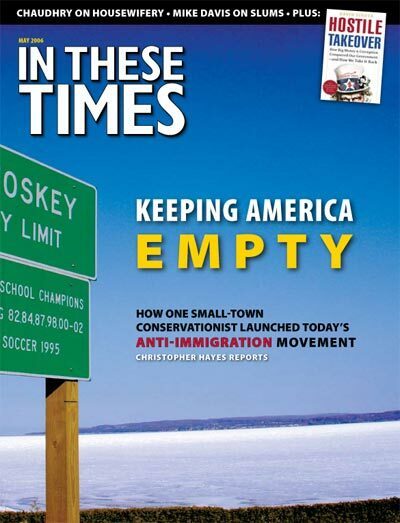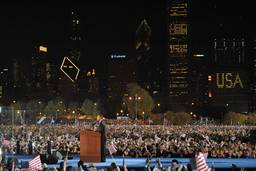“There’s no doubt that Mexican men and women – full of dignity, willpower and a capacity for work – are doing the work that not even blacks want to do in the United States.”
Mexican President Vicente Fox’s comments last year to a group of Mexican businessmen ignited a political firestorm across the Americas. Fox also foreshadowed a powerful divide in the national debate over immigration reform.
He was defending Mexican immigrants, arguing they are hard-working, essential assets to the American economy. Some African Americans retorted that Fox’s declaration was racist and demeaning, and that “they” are breaking our laws and taking our jobs.
There is esperanza. In February, a provocative museum exhibit opened in Chicago that is confronting Mexico’s racist past head-on.
“The African Presence in Mexico” opened in February at the Mexican Fine Arts Center Museum, the largest Latino arts organization in the United States. The museum is a cultural centerpiece of the largely Mexican Pilsen neighborhood on Chicago’s Southwest Side. The show traces the Mexican “Third Root” – what the museum calls the “missing chapter” of Mexican history – 500 years of African contributions to Mexican society and culture.
Africans were first brought in bondage to Mexico in 1519. On Jan. 6, 1609, Yanga, an African leader, founded the first free African township in the Americas. Since then, black Mexicans have made an indelible mark on the nation’s art, music, cuisine and culture.
The exhibit runs in Chicago through Sept. 3, and will later travel across the United States and Mexico. It is bolstered by an assiduous effort by Latino and African-American leaders to educate their constituents about common goals and identities.
Yet staging the exhibit epitomizes the ambivalence about forging alliances among both African Americans and Latinos. Museum President Carlos Tortolero had braced himself. He knew it would push buttons, he says, and the museum has received “obscene phone calls” from people objecting to the embrace of Mexican blackness. Still, the show is drawing record crowds. Many are African-American.
For me, the exhibit recalled memories of growing up in Chicago in the ’60s, when Chicago was as segregated as the Deep South. We lived on the city’s black South Side. Most black folks never ventured outside of the ‘hood, much less to Latino enclaves on the other side of town. But my mother worked on 18th Street, a bustling Pilsen barrio. She did clerical work alongside Mexican immigrant ladies at the Bethlehem Center, a now-defunct settlement house. She brought home kind words about her hermanas along with some killer taco recipes. The night of an infamous “Big Snow,” a record blizzard, a co-worker gave her a ride home in the middle of the night. I was proud of my mother’s solidarity with her Mexican sisters. I thought she was, too.
Now I have to drop a dime on Mama. The other day I called to say hello. She had been watching footage of the massive marches advocating for immigration reform. Mama delivered a 20-minute rant aimed at Latino immigrants.
Her voice dripped with disgust. “Those people are breaking the law. They have no right to be here. They are taking our jobs. They don’t even want to learn to speak English. We’re paying for their health care … their schools. And they have the nerve to demand, demand that we give them citizenship!”
It was ugly. I tried to reason with her, but I couldn’t get a word in edgewise.
And Mom is not alone. In the heat of the ongoing debate over immigration reform, her sentiments are echoed in venues from black talk radio to the barbershops.
For once, the leaders may be ahead of the flock. Last spring Antonio R. Villaraigosa was elected the first Mexican-American mayor of Los Angeles since 1872 on the strength of a progressive black/brown coalition. He follows in the footsteps of Harold Washington, who was elected in 1983 as Chicago’s first black mayor by an alliance of blacks, Latinos and liberal whites.
U.S. Rep. Luis Gutierrez, a Puerto Rican seven-termer from Chicago’s Northwest Side, has announced he will soon give up his seat to launch what he calls a cross between a Latino Rainbow PUSH and a political action committee. He recently teamed up with U.S. Rep. Jesse Jackson Jr. in a black/brown bid to elect Joy Cunningham, an African-American woman, to the Illinois Appellate Court.
Still, if you survey the crowds at those pro-immigrant marches, you don’t see many African-American faces. The grassroots is not there yet.
The pols must convince the people that it is in their urgent interest to resist the divisive race-baiting propagated by the powers that be. “African Presence” confirms there are spots to hoe common ground. I’m working on getting Mama to the show.








